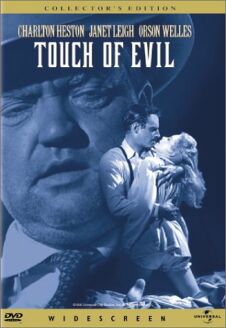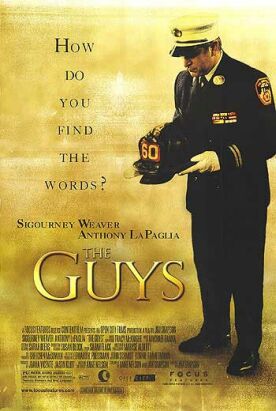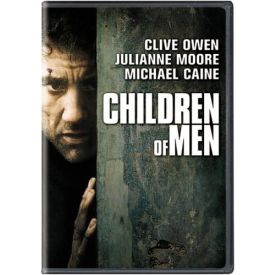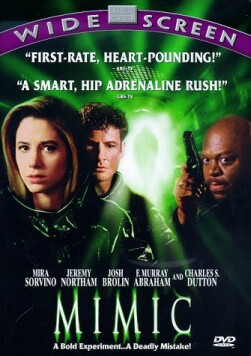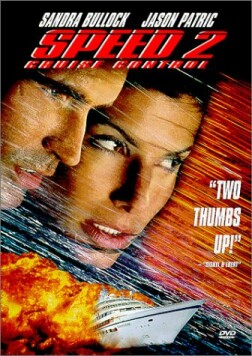Touch of Evil
Orson Welles’s Touch of Evil, made in1957 and now restored according to a memo of protest Welles wrote to Universal after they butchered the movie on release, may be the best B-picture ever made. Watching it today, you have to wonder if he knew what he was doing — which was anticipating the postmodern film by twenty or thirty years — or if he thought he was making another Citizen Kane. The movie resembles the magnificent, ruined shambling figure of Welles himself as Hank Quinlan, a corrupt police detective in a Mexican border town who tries to frame up an honest Mexican cop called Vargas (Charlton Heston) after the latter catches on to his crooked ways. Its corny dialogue and the cheesy production values may have been dictated by budgetary considerations or fatigue or drunkenness, but Welles makes the most of them and, like his character Quinlan, retains the power to surprise us with flashes of brilliance.
Among the Wellesian touches are the irony (as it certainly must have appeared in 1957) of making the good and incorruptible guy the Mexican, while the corrupt police are the Americans. Best of all is the hilarious climax of the picture in which Mr Heston, his face darkened and mustachioed to make him look Mexican, tries to follow Welles with the high technology of the day — a radio-tape-recorder with an absurd aerial on which he is attempting to record the latter’s inadvertent confession. Heston is required to walk into a river filled with garbage as Welles strolls over a bridge casually chatting to his partner, who has agreed to wear a microphone the size of a cigarette pack. The sound of his voice fades in and out on the machine, is interrupted by static and, most worryingly, creates a feedback loop which whines and then amplifies his voice to the night air. Welles, supposed to be drunk, thinks the sound only an “echo,” but the sight of him peering over the bridge and big Chuck Heston in brownface, standing in filthy water up to the crotch and cowering underneath it is itself worth the price of admission.
The Mexican, representing rationality and order and honesty and good government, is appropriately given the modern technology of law enforcement but, rather like poor Kenneth Starr, nevertheless finds himself reduced to the level of a common peeping Tom. There is social commentary too in Vargas’s relationship with his delicate, Philadelphian wife, Susan (Janet Leigh), whom he parks in a sinister, isolated motel run by a comically nervous Dennis Weaver while he is doing the man’s work of entrapping Quinlan. Like a 50s housewife in Levittown, Susan falls prey to boredom, illicit sex and finally reefer madness as the border town crime lord (Akim Tamiroff), whose assistance Quinlan has enlisted to frame Vargas, sends his leather-jacketed teen minions to kidnap her and force-feed her booze and drugs. Learning that Susan is in trouble, Vargas roars off to the motel — and right past her as she cries out to him, in her underwear, from the fire escape of the hotel to which she has been transported and where she has just awakened next to a dead body. It is a wonderful image of missed connections and social failure that resonates across the years.
Included in the film’s many other riches are two scenes with Marlene Dietrich as a fortune teller on the Mexican side of the border, an old flame whom Hank hasn’t seen since he gave up drinking. Still ravaged by the booze and ill-defined neglect and guzzling chocolate in lieu of the sauce, Hank wanders into her marvelously kitchy lair one night. She takes one look at him and says with her most expressionless look, “You gotta lay off those candy bars.” Among the decorations in her place are a huge head of a bull stuck round with the decorated lances used by bullfighters. The shot of another great bull, Hank Quinlan, standing underneath it, prefiguring his own end, is vintage Welles, as is the final scene in which he tries to wash blood off his hands in the dirty river and ends up floating downstream in it on his back, staring up at the night sky, his great belly all that remains visible of him. Most spooky of all is when he asks Miss Dietrich to tell his fortune and she replies: “You haven’t got any. It’s all used up.” That was Welles’s fortune almost as soon as he arrived in Hollywood, but of his final forty-odd years of misfortune, this movie is a monument that deserves to last.
Discover more from James Bowman
Subscribe to get the latest posts to your email.

